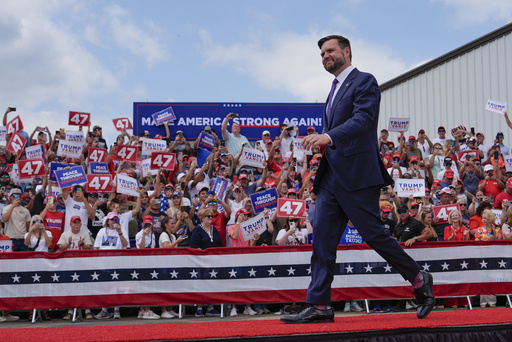
Ohio Senator JD Vance explained in his writing that his conversion to Catholicism in 2019 played a significant role in shaping his political perspective. This transition has also brought him into contact with a Catholic intellectual movement that has been relatively obscure to the American public until now. This movement, known as “postliberalism,” is made up of professors and media figures who align with Vance’s political views.
Postliberalism stands in contrast to both the progressive left and economic liberalism, advocating for a more authoritative government controlled by individuals who share their beliefs. They push for a shift in power dynamics within government bureaucracies, universities, and other institutions to realize their vision of the “common good.” Some critics argue that postliberalism has ties to authoritarian regimes of the past.
JD Vance has aligned himself with the postliberal movement, speaking at events alongside key figures and endorsing some of their ideas. He supports the idea of seizing control of institutions like universities to advance their agenda. While Vance has emphasized the influence of his Catholic faith on his political ideology, he has also distanced himself from certain teachings of the Church that may not align with American values.
The postliberal movement, although not widespread, has gained traction among influential Catholic scholars and writers. Vance’s recognition as the Republican vice-presidential nominee is a significant milestone for the movement, bringing their ideas to a broader audience. However, concerns have been raised about the movement’s historical associations with authoritarianism and its potential implications for personal freedoms.
Postliberals advocate for various policy changes, including promoting childbearing, enhancing church-state relations, restricting pornography, and supporting private-sector unions. They often look to leaders like Hungarian Prime Minister Viktor Orban as examples of effective governance. These ideas could potentially influence Vance’s policy decisions if he were to assume the role of vice president.
While Vance draws inspiration from the postliberal movement, he is not obligated to adhere strictly to its principles. Political analyst Julian Waller suggests that Vance may incorporate insights from postliberals into his decision-making process without being bound by their ideologies. As an example of a postliberal approach in government, Waller points to Florida Governor Ron DeSantis’ initiatives aimed at restructuring public higher education and eliminating certain programs.
JD Vance’s journey into postliberalism through his Catholic faith sets the stage for potential shifts in his political stance, influenced by a movement that emphasizes strong government control and societal reform.
